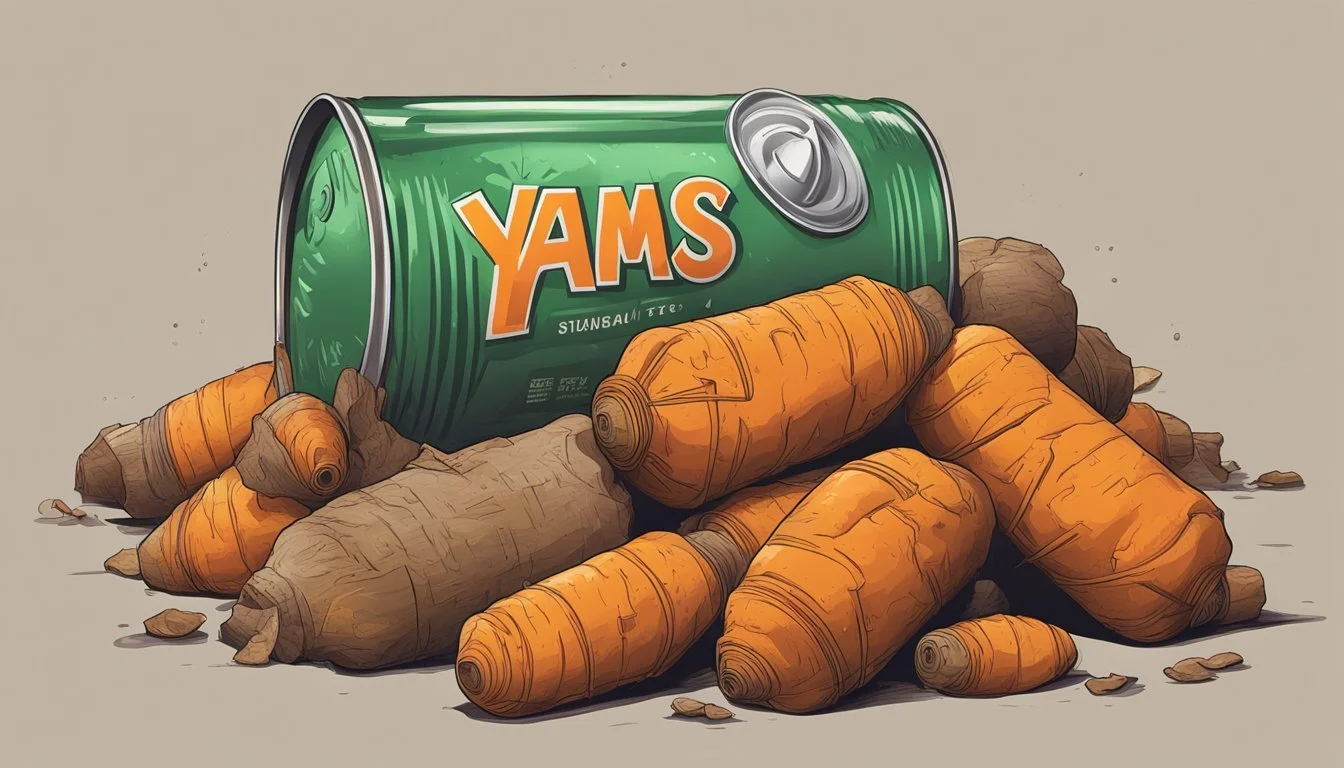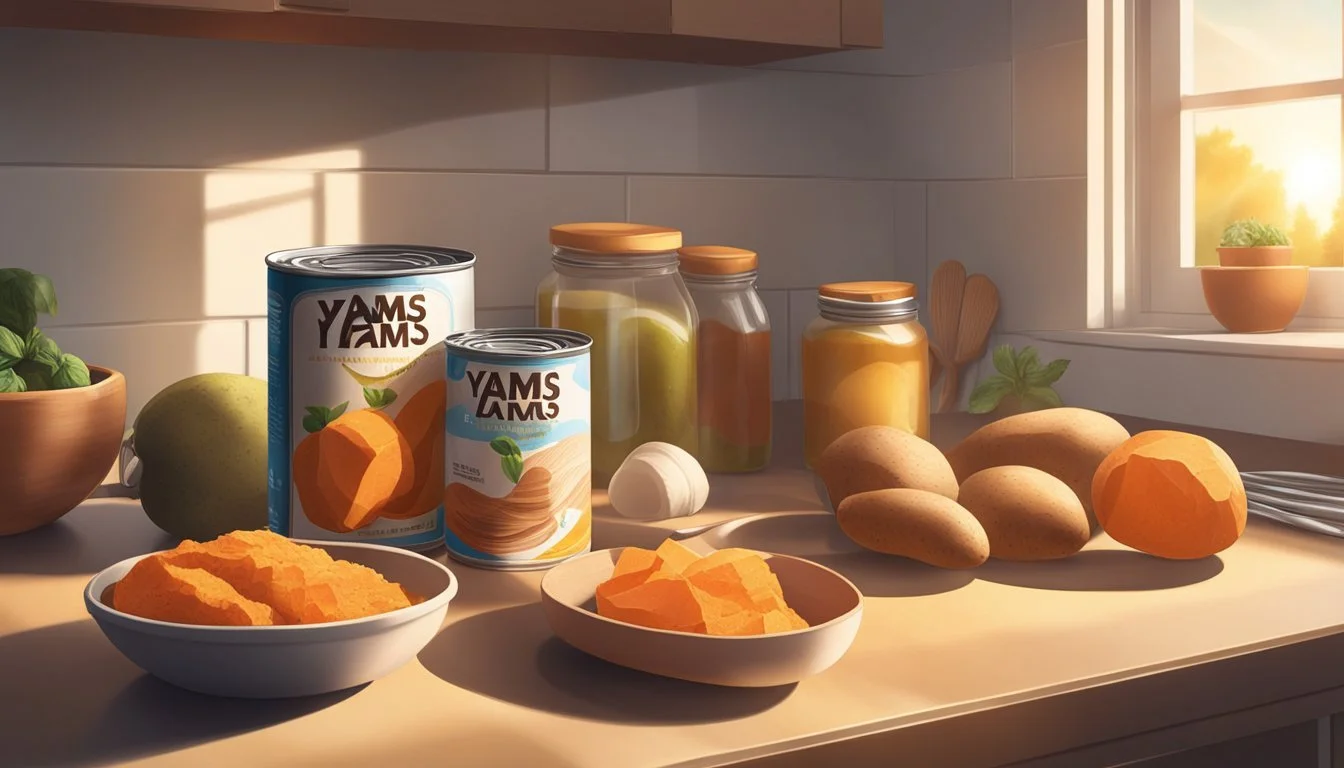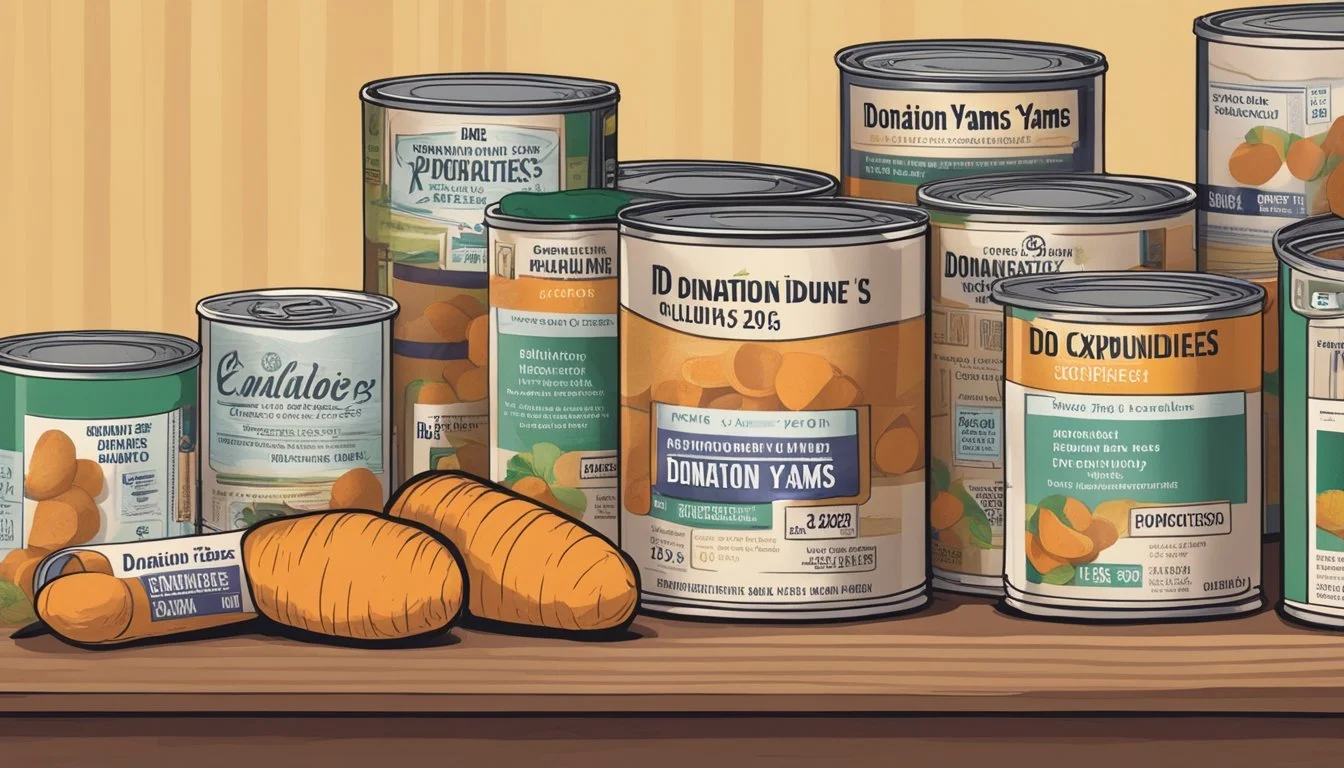Do Canned Yams Expire?
Understanding Shelf Life and Storage
When it comes to understanding if canned yams expire, the simple answer is yes, they do. Unopened canned yams generally last between two to five years depending on the manufacturer and storage conditions. Proper storage is crucial in extending their life, which includes keeping them in a cool, dry place away from direct sunlight.
Even though canned yams have a relatively long shelf life, they won't maintain peak quality forever. Over time, they may start to lose some flavor and vitamin content, though their protein, carbohydrate, and mineral levels stay stable. Once opened, it's essential to refrigerate them in an airtight container and consume them within a week to avoid spoilage.
Food safety should always be a priority when dealing with canned foods. While the expiration date on canned yams serves as a guideline for best quality, it's still possible for them to remain safe to eat after this date if stored correctly. Nevertheless, always inspect the can for signs of damage or spoilage before consumption to ensure both safety and quality.
Understanding Canned Yams
Canned yams have become a staple in many households due to their convenience, long shelf-life, and versatility in cooking. In this section, we will explore what canned yams are, their nutritional value, the commercial canning process, and the distinction between low-acid and high-acid foods in canning.
What Are Canned Yams?
Yams are starchy tubers that belong to the Dioscoreaceae family. Often confused with sweet potatoes, yams have a distinct taste and texture. Canned yams are prepared by peeling, slicing, and cooking yams before placing them in cans with a preserving liquid, such as syrup or water.
These yams are then sealed and subjected to heat to create a sterile environment, which helps in preserving their flavor and nutritional content over time.
Nutritional Value
Canned yams are rich in essential nutrients, making them a nutritious addition to meals. They provide a significant source of carbohydrates, which are essential for energy. Additionally, yams contain vitamins such as Vitamin C and Vitamin B6, as well as important minerals like potassium and manganese.
Their fiber content aids in digestion, while the presence of antioxidants helps in neutralizing harmful free radicals in the body. Although the canning process may slightly alter their texture, the primary nutritional value remains intact.
Commercial Canning Process
The commercial canning process of yams involves several steps to ensure longevity and safety. Yams are first washed, peeled, and cut into uniform pieces. These pieces are then blanched to maintain texture and color. After blanching, the yams are packed into cans along with a preserving liquid, which can be either sweetened syrup or salted water.
The sealing process is followed by heating the cans at high temperatures to kill any potential bacteria or microorganisms. This heat treatment also ensures the creation of a vacuum seal, which is crucial for extending shelf-life and preventing spoilage.
Low-Acid vs. High-Acid Foods
In the context of canning, foods are categorized based on their acidity levels. Low-acid foods include items like yams, potatoes, and meat. These require careful processing to prevent the growth of harmful bacteria, such as Clostridium botulinum, which can thrive in low-acid environments.
On the other hand, high-acid foods—such as fruits, tomatoes, and pickles—naturally inhibit bacterial growth due to their acidity. This distinction is crucial because it influences the canning method used. Low-acid foods like yams require higher temperatures and precise cooking times during canning to ensure safety and quality.
Shelf Life and Expiration
Canned yams can last for years when stored properly, but their quality and nutritional value can decline over time. Understanding the shelf life, reading expiration dates, and following USDA guidelines are crucial for ensuring safety and enjoying the best quality of canned yams.
Determining Shelf Life
Canned yams typically have a shelf life of 2 to 5 years. Factors influencing their longevity include storage conditions, manufacturing date, and packaging. It’s essential to store canned yams in a cool, dry place to extend their life.
Home-canned yams should be used within 1 year for the best quality but can last up to 2 years. Commercially canned yams often last longer due to better sealing and preservatives.
Reading Expiration Dates
Understanding different date labels is key. "Best-by" and "sell-by" dates indicate peak quality but not safety. "Use-by" dates are more critical for safety and quality.
For canned yams, they may remain safe to eat past these dates if stored correctly. Visual and olfactory checks can help determine if they are still good. Swollen cans or off smells suggest spoilage and should be discarded.
USDA Guidelines on Canned Foods
The USDA provides guidance on canned food safety. Canned yams, when unopened and stored properly, can remain shelf-stable for years. The USDA recommends a "first in, first out" method: use older cans first.
Post-opening, refrigerate any leftovers in covered containers and use within 3 to 4 days to prevent spoilage. The USDA also emphasizes avoiding cans with dents, rust, or swelling, as they can be signs of contamination.
Safe Storage Practices
Storing canned yams correctly is essential to extend their shelf life and maintain quality. Focus on keeping them in optimal conditions, both unopened and after opening.
Ideal Storage Conditions
Canned yams should be stored in a cool, dry place like a pantry, garage, or basement. Temperature plays a significant role; aim for a room temperature around 50°F to 70°F (10°C to 21°C). Avoid areas that experience frequent temperature changes such as attics.
Make sure the storage area is free from moisture, as rust can damage the can. Ensure proper ventilation to keep the area dry and cool, preventing spoilage and maintaining peak quality.
Storing After Opening
Once opened, store canned yams in a refrigerator. Transfer the contents to an airtight container to avoid exposure to air and contaminants.
Storage time for opened canned yams is significantly shorter. Typically, they will last for 3-4 days in the fridge. Keeping them in sealed containers helps maintain their flavor and texture for as long as possible within this timeframe.
Effects of Temperature on Canned Yams
High temperatures can cause canned yams to deteriorate faster, affecting their quality and taste. Exposure to temperatures above 90°F (32°C) can soften the cans, potentially leading to leaks.
Low temperatures, on the other hand, can cause the contents to freeze and expand. This may result in breakage or distorted cans, compromising the seal and safety of the food. Balanced storage conditions are crucial to preserving the integrity of canned yams.
By following these practices, one can ensure the longevity and safety of canned yams, both unopened and after initial use.
Recognizing Spoilage
Understanding how to recognize spoilage in canned yams can prevent health risks and ensure that the food remains safe to eat. This section will cover specific signs of spoilage, potential impacts of dents or damage to the cans, and the associated health risks.
Signs of Spoiled Canned Goods
Certain signs clearly indicate that canned yams have spoiled and are no longer safe to eat. Bacterial growth is a primary concern, often noticeable through unpleasant smells, strange textures, or unusual colors.
Mold may develop on the surface, particularly if the can has been improperly sealed. Bulging cans are another significant indicator. They signal that gas produced by bacteria, such as Clostridium botulinum, is present inside the can.
Leaks are also a red flag. If any liquid is seeping out of the can, it suggests that bacteria may have already compromised the product. All these signs point to spoilage and potential health risks.
Dents and Damage to Cans
Physical damage to cans can also indicate the possibility of spoilage. Dented cans, particularly those with deep dents, may have compromised seals, which can allow bacteria to enter.
Rust on the can is a signal that the integrity of the container may be breached. If rust has physically penetrated the can, the food inside is likely spoiled.
Bulging cans are particularly concerning, as they often contain harmful toxins produced by bacteria. It's crucial to avoid consuming any canned goods that show these signs of damage.
Health Risks of Spoiled Canned Yams
Consuming spoiled canned yams can pose significant health risks. Clostridium botulinum, the bacterium responsible for botulism, can thrive in improperly sealed or damaged cans. This bacteria produces a potent toxin that can cause severe food poisoning.
Symptoms of botulism include nausea, vomiting, dizziness, and in severe cases, paralysis. Other bacteria found in spoiled canned yams can cause foodborne illnesses, leading to symptoms like stomach cramps, diarrhea, and fever.
Avoiding canned yams with any spoilage signs ensures food safety and prevents these health issues from arising.
Maximizing Yams' Shelf Life
Proper storage and handling techniques can significantly enhance the shelf life of canned yams. From correct canning methods to repackaging and freezing, these steps help maintain yams' quality and safety for extended periods.
Proper Canning and Sealing
Using high-quality canning methods ensures that yams remain safe and fresh for longer. It starts with selecting fresh, undamaged yams. Before canning, thoroughly wash and peel the yams. Proper sealing is crucial to prevent contamination. Air-tight seals prevent bacteria and other contaminants from entering the can.
Sterilize all equipment and use a pressure canner to achieve the necessary temperature for safe preservation. Following the manufacturer's instructions is vital. Ensuring the cans are stored in a cool, dry place enhances their longevity. Proper storage conditions allow canned yams to remain safe and shelf-stable for up to five years.
Repackaging and Freezing Guidelines
Repackaging leftovers into smaller, air-tight containers can extend their usability. Use durable freezer bags or vacuum-sealed bags to store yams. This reduces exposure to air, preventing freezer burn and maintaining quality. Label containers with the date of freezing helps track their storage time.
For maximum longevity, ensure temperatures remain consistently below zero degrees Fahrenheit. While freezing yams can preserve them almost indefinitely, for best taste and texture, consume within a year. Thaw frozen yams in the refrigerator overnight before use to maintain their texture and flavor. Properly managed freezing techniques ensure minimal nutritional loss and maintain the yams' state close to freshly canned quality.
Using Canned Yams in Meals
Canned yams are versatile and nutritious, ideal for a variety of meals. They can be used in both savory and sweet dishes, ensuring that leftovers never go to waste.
Nutritious Recipes
Canned yams are a great addition to soups, casseroles, and sauces. For a hearty soup, you can combine yams with other vegetables and a protein such as chicken or canned ham. Casseroles are another excellent choice; mix yams with green beans, cheese, and breadcrumbs for a comforting dish.
For a sweet option, consider making sweet potato pie or cinnamon-spiced yam cookies. These recipes not only taste great but also provide essential nutrients like vitamin A, fiber, and potassium. Including canned yams in your recipes is a convenient way to enhance their nutritional profile.
Preparing Leftovers
Using leftover canned yams creatively can reduce food waste. Store them in an airtight container in the refrigerator, and use them within a week. Leftover yams can be mashed and included in pancakes for a nutritious breakfast.
They can also be pureed and added to sauces, enhancing the flavor and texture of dishes. Another idea is to incorporate them into a mixed vegetable stir-fry, providing a sweet and savory balance. With a little creativity, leftovers can seamlessly fit into various meals, ensuring nothing goes to waste.
Donation Guidelines
When donating canned yams, it's important to ensure that they are in good condition and meet the necessary requirements. Specific guidelines vary depending on the organization, but adherence to basic standards helps maintain safety and quality.
Donating to Food Banks
Food banks typically accept unopened, commercially canned yams that are in good condition. Donors should check for visible signs of damage such as dents, rust, or leaks.
Expiration dates on canned goods are generally related to quality, not safety. However, some food banks may have stricter policies and not accept items past their printed date.
It’s important to note that home-canned goods usually are not accepted due to safety concerns. Always consult with the food bank for specific requirements before donating.
Checking Cans for Donations
Before donating canned yams, inspect each can thoroughly. Check for conditions like:
Dents or bulges: These can indicate compromised safety.
Rust: Rusty cans should be discarded.
Leaks: Any sign of leaking renders a can unsuitable for donation.
Ensure that the labels are intact and readable, containing necessary information about the product. This includes the expiration date and any other essential labeling provided by the manufacturer.
Adhering to these guidelines ensures that donations will be accepted and contribute to a valuable cause without compromising the safety of recipients.
Expert Advice
This section delves into insights from food safety experts and significant studies conducted by Michigan State University on the shelf life and safety of canned yams.
Food Safety Experts' Insights
Food safety experts emphasize the importance of proper storage conditions for unopened canned yams. Stored in a cool, dry place, these yams can last up to 2-5 years. Refrigerated and airtight containers can further extend their usability.
Key recommendations:
Always inspect cans for dents, rust, or bulges.
Adhere strictly to manufacturer dates for optimal quality.
Once opened, transfer yams to hermetically sealed containers to maximize longevity and prevent contamination.
Texture and flavor may degrade over time, but nutritional content (such as proteins and carbohydrates) remains stable for years.
Michigan State University Studies
Michigan State University has undertaken extensive research focusing on the shelf life and nutrient retention in canned goods like yams. They found that the best quality is maintained within the first 2-3 years.
Storage guidelines:
Home-canned yams: Recommended for consumption within one year, with a maximum shelf life of two years.
Nutritional stability: After the optimal period, vitamins may decline, but minerals and other macronutrients are largely unaffected.
Freezing after opening, while changing texture, preserves nutritional content and extends usability for cooked dishes.





